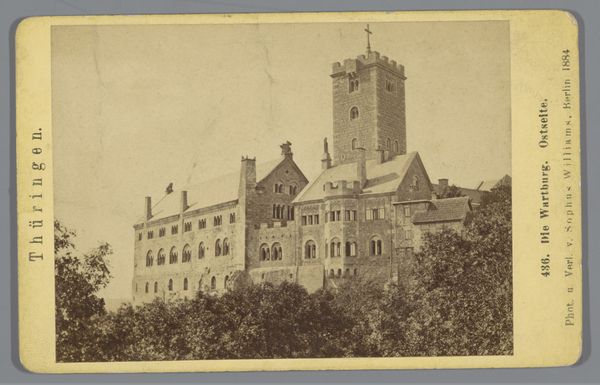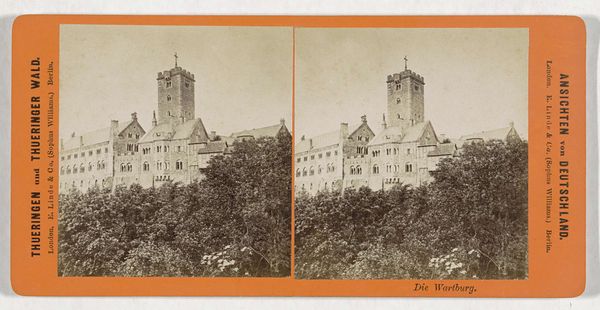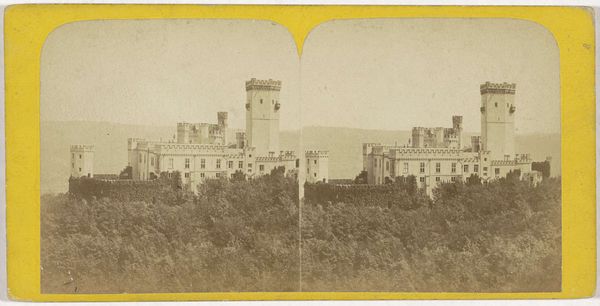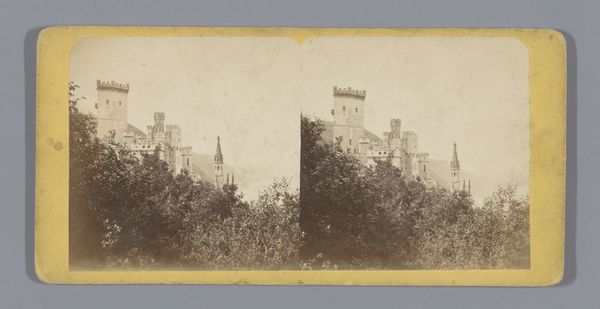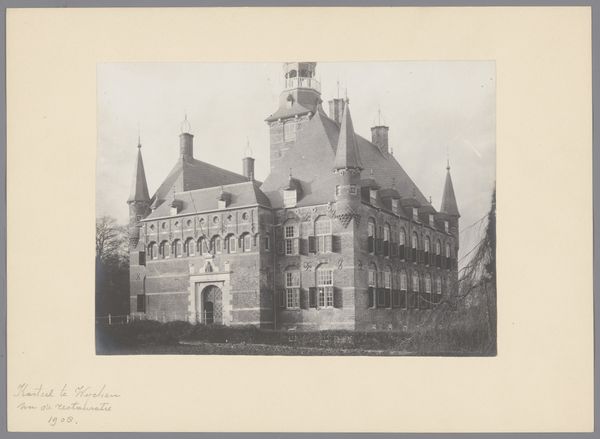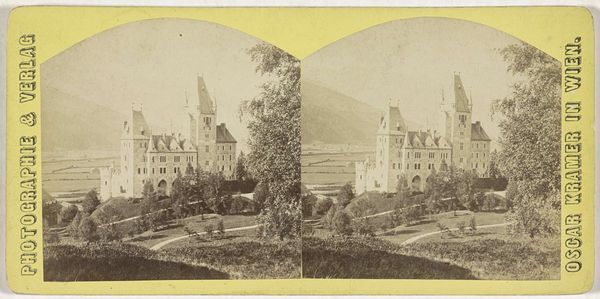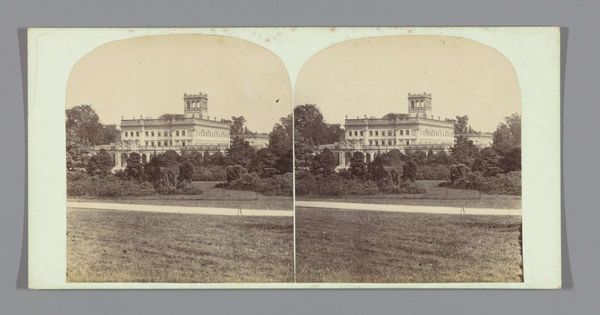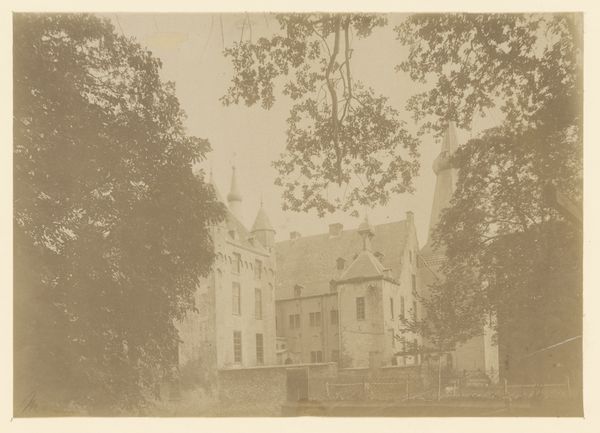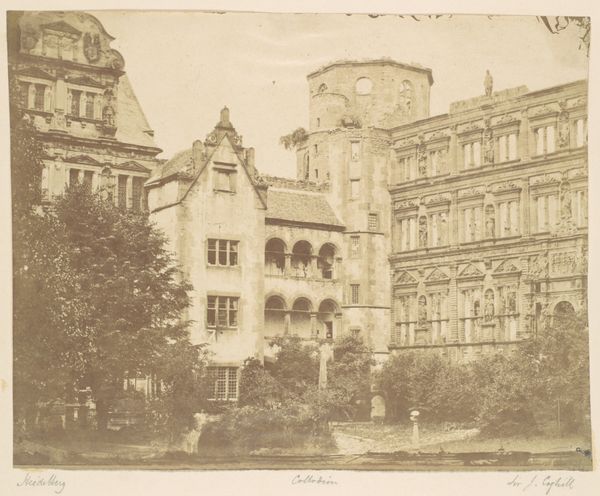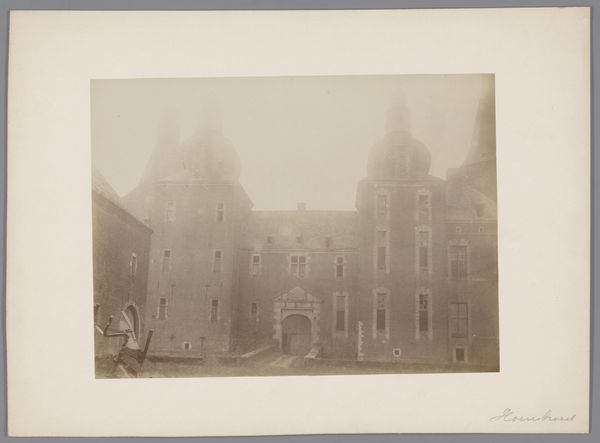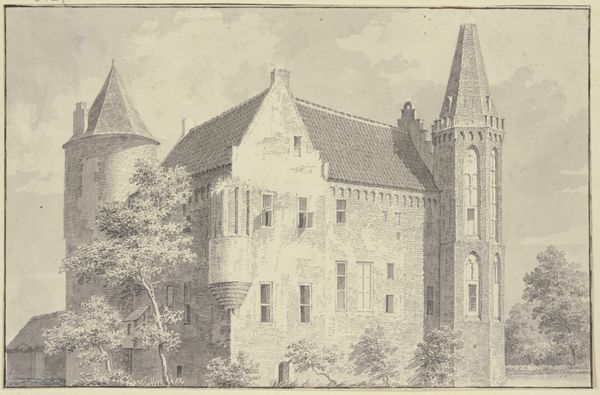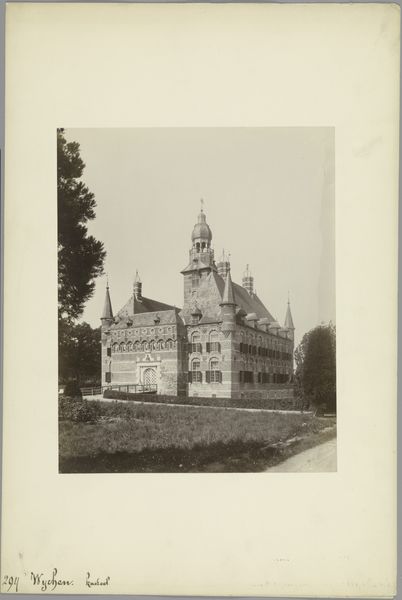
Dimensions: height 86 mm, width 178 mm
Copyright: Rijks Museum: Open Domain
Editor: This is a photograph titled "Oostzijde van de Wartburg nabij Eisenach, Duitsland," taken between 1873 and 1890 by E. Schuler. It's an albumen print, and looking at the stereoscopic view, the Wartburg castle seems imposing, like a relic rising from the landscape. What kind of historical importance does it hold? Curator: The Wartburg has immense socio-political significance. It was a pivotal site in German history, acting not only as a medieval castle but also a symbol of German identity. It famously sheltered Martin Luther when he translated the New Testament into German, significantly shaping the German language and the Protestant Reformation. The image also arrives during the rise of photography in art, as photography was considered a lower-level artistic skill and medium, with a few exceptions in romantic portraiture, compared to painting or sculpture. This picture gives visual power to Germany’s religious past. Why do you think this view, the “Oostzijde,” was selected? Editor: Perhaps to highlight the castle’s defenses? It certainly presents a strong, impenetrable facade. The choice might connect to a desire for a unified German identity in the late 19th century, recalling a strong past. Curator: Exactly. The image likely circulated widely as a visual shorthand for German cultural pride during a time of national unification movements and Romantic revivals. The albumen print also helped reproduce the work in great numbers, facilitating its popularity as a representation of German identity. Considering the album and photography aspect of the piece, do you think the social background of the photographer impacts our reading of the artwork? Editor: Hmm, interesting point. It makes me think about the role photography played in constructing and disseminating national narratives, shaping how people viewed history and their place in it. That is a great reminder of the art market's influence on our perception of history. Curator: Absolutely! Understanding the public role of this image helps us to appreciate how photography became a potent tool for constructing and reinforcing cultural values.
Comments
No comments
Be the first to comment and join the conversation on the ultimate creative platform.
